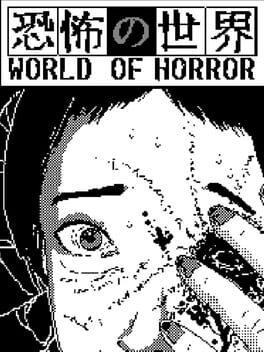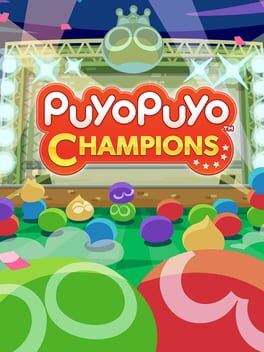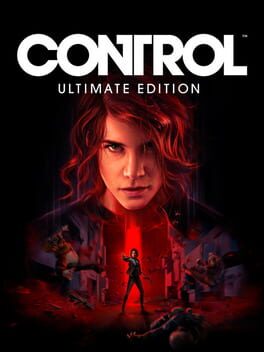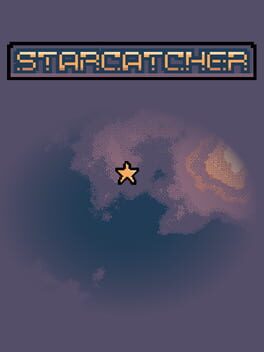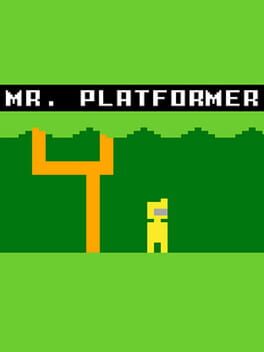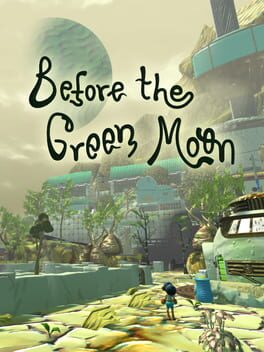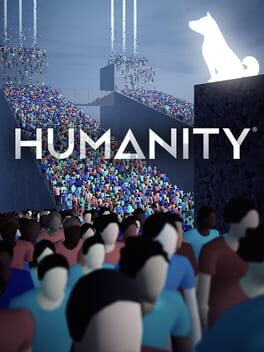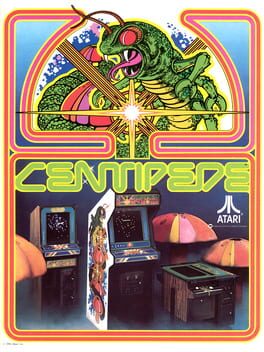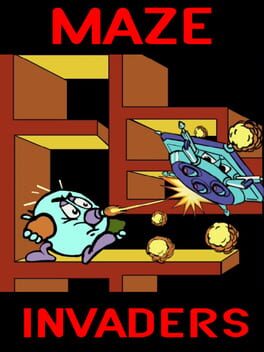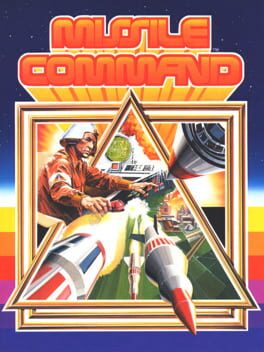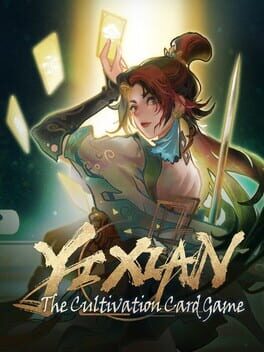done
2023
There's more to World of Horror than I thought at first glance. That is, more options and depth in what can be done in different locations, events, and cases. Koźmiński and the rest of the small team around this one accomplished a lot with a little. The interface is still clunky and cluttered, but it works well enough within the game's structural pillars of dungeon crawling and random generation. Speaking of, the text and themes of the game are a better fit for those structures than usual. Strange and threatening happenings can happen at any moment, but what else should be expected when an eldritch force attempts to break through into our world?
2018
2023
It's still a good ride. This remake is glossier, lengthier, and controls more fluidly than the original. I'm not sure that all adds up to a better game, as I think it loses a bit of its arcade-shooter feel. This version feels less idiosyncratic for good and bad. Some boss fights are definite improvements (especially Krauser) and so are some areas (the semi-open space around the lake and the island). Is this essential? No, but it is a lot of fun to get in and get blasting.
I started replaying this when I first got a PS5. It was a lights-out difference from my first play on PS4. Turns out that not having to wait for things like the start screen to load has a big impact. I also had a much easier time navigating the Oldest House this go around and rushing launch powers to maximum made it an easy trip. I wound up completing every side mission, since that's where a lot of the flavor is. And in 2023, the sequence of Finnish Tango > Ashtray Maze is still just about as good as it gets in action/adventure games.
2022
Good for a quick hit of puzzle-platforming. The puzzles in that designation are better than the platforming, in that I kind of wish this hadn't been restricted to a game that would fit in a one-button jam. I enjoyed the use of gravity and the resulting emphasis on spacing and directionality. But I would have enjoyed it more without fighting the controls that require a jump and stomp in order to change direction. Having such a heavy mechanic doesn't quite jive with the puzzle design and led to a few retries that felt unnecessary.
With that said, I also enjoyed the available variety in star types, obstacles, and even the color palette. I plan to check out more from Escada soon.
With that said, I also enjoyed the available variety in star types, obstacles, and even the color palette. I plan to check out more from Escada soon.
2020
After a bit under 60 escape attempts, with 10 successful, I rolled credits satisfied. I had plenty of fun along the way, particularly with how the game develops through dialog run after run. The cast is entertaining, particularly when they interact or comment on one another, and the action drew me in most of the time.
While there are a lot of options for players to customize Zag and set conditions for runs, I would have liked for there to be more variety in the Underworld. Rooms became a bit too recognizable at the end. Even with Extreme Measures, so did the boss fights. But I was still discovering new combinations of weapons and boons in my latest run and having a good time. The combination of visual novel and roguelite with Supergiant's flair for production still stands out, though.
While there are a lot of options for players to customize Zag and set conditions for runs, I would have liked for there to be more variety in the Underworld. Rooms became a bit too recognizable at the end. Even with Extreme Measures, so did the boss fights. But I was still discovering new combinations of weapons and boons in my latest run and having a good time. The combination of visual novel and roguelite with Supergiant's flair for production still stands out, though.
2023
Intriguing throughout. It begins as Cavanagh's experiment making a platformer with Godot. It's almost like flipping through a sketchbook of what he considers to be the basic elements of platformers, with graphics from an earlier era to match. Collisions and obstacles are fair, although water levels caused more and more trouble as I closed in on finishing every level. Levels became more complex as I went, as did my thoughts on what Cavanagh was conveying through the syntax of platform games.
Before the Green Moon is a beautiful game. Relationships unfold slowly and gently, but the pace of the game around the busywork of farming and gathering provides structure. For a large chunk of the game's time (which, for me, lasted about 9 or 10 hours), it seemed like there was at least one new encounter or discovery each day. The ending also provided me with a feeling of nervous excitement that I get before a big trip. Few games are this emotionally engaging.
2023
It's possible to look at a level of Humanity for ages. The visual concept of bipedal figures swarming or moving like schools of fish remains striking throughout the game's transformations. The soundtrack is also pleasantly abstract, which works well at both regular speed and fast-forward. That's a good thing, as the major downside to the game can be how much it relies on trial-and-error and restarts. However, the variety of levels and challenges ensures that issue doesn't dominate the game. Some levels are genuine brain-twisters and the boss fights (yep, it's a puzzle game with boss fights!) are always a spectacle.
1981
I'm not sure how many times I've played Centipede, but in the last couple months I've been playing it again in the Atari 50 package. I wanted to at least get back to where I was regularly hitting another credit and topping the default leaderboard. It's kinda nice to once again be confident that I could put my initials up on a machine that gets restarted every night.
Centipede is an excellent early arcade game. I think that some of the ways that it uses randomness are probably still textbook today, or at least they should be. The way the board becomes increasingly dense in interactions between the player and the centipedes is a good way for complexity to emerge. The fun, as I see it, is in managing that complexity for as long as possible. The additional obstacles of jumping spiders and dive-bombing beetles that further gum up the works also require more on-the-fly adjustments.
It's a well-designed game that's just tricky enough to reward repeated attempts as players get to grips with the strategy of it. I can't see myself wanting to truly master it, but I understand how it could get its hooks in.
Centipede is an excellent early arcade game. I think that some of the ways that it uses randomness are probably still textbook today, or at least they should be. The way the board becomes increasingly dense in interactions between the player and the centipedes is a good way for complexity to emerge. The fun, as I see it, is in managing that complexity for as long as possible. The additional obstacles of jumping spiders and dive-bombing beetles that further gum up the works also require more on-the-fly adjustments.
It's a well-designed game that's just tricky enough to reward repeated attempts as players get to grips with the strategy of it. I can't see myself wanting to truly master it, but I understand how it could get its hooks in.
1981
It's easy to see why this remained a playable prototype. It plays like a series of ideas on a chalkboard under the heading "what if we changed... this?.. from Pac-Man?". None of the resulting ideas manifested in a better or more interesting game.
In place of fixed boards and channels, walls move or can be flipped around. There's some enemy variety, including some with bullets, and the player character can also shoot. Movement is relatively free, although I often found myself waiting for gaps to open up in the moving walls that I just mentioned. The only interesting ideas that I found were the somewhat order of levels, based on exit doors, and the option to restart from the last board played before death.
I played until I could easily top the default leaderboard and I think I get the idea. On to the next one in Atari 50.
In place of fixed boards and channels, walls move or can be flipped around. There's some enemy variety, including some with bullets, and the player character can also shoot. Movement is relatively free, although I often found myself waiting for gaps to open up in the moving walls that I just mentioned. The only interesting ideas that I found were the somewhat order of levels, based on exit doors, and the option to restart from the last board played before death.
I played until I could easily top the default leaderboard and I think I get the idea. On to the next one in Atari 50.
2023
The style of the game is crisp and I found the multiple skins to each be readable. It's well-suited to mobile, too, and maybe part of the satisfaction is the tactility of it. There's a mixture of rumble, sound effects, and visual pops that is absorbing and satisfying. The feeling is almost like moving a rubik's cube around, but with more videogame flash.
I enjoyed the crunch of the blocks and the additional complication of new block types while progressing through finity. While I considered abandoning it around one of the higher tiers, all I needed to do was wrap my head around combos and to let go of worries about blocks that were locked out of moves. The higher priority blocks to deal with come in pairs or must be broken open. After realizing that, it was easy to hit the finish line at platinum rank.
I enjoyed the crunch of the blocks and the additional complication of new block types while progressing through finity. While I considered abandoning it around one of the higher tiers, all I needed to do was wrap my head around combos and to let go of worries about blocks that were locked out of moves. The higher priority blocks to deal with come in pairs or must be broken open. After realizing that, it was easy to hit the finish line at platinum rank.
1979
As with a lot of these older Atari titles, I found myself wondering about the mystery of Asteroids' appeal. The game is fascinating in its simplicity. My mind wanders during play after play. How is it that I have to stop myself from reading intentionality into the random patterns and velocities of asteroids as they break? How is it that shots from large (and even worse, small) UFOs seem to be directed at the spike that represents my spaceship? How is it that, simply by calling the game "Asteroids," I read that shape as a spaceship and the mushroom-like shapes as, well, Asteroids? And why is it so difficult for me to routinely crack 10,000 points?
1980
A brilliant piece of Cold War media. Yes, I mean that. Contextualized in the Atari 50 collection, the blurb that reads that designer Dave Theurer was inspired by nightmares of nuclear annihilation comes through loud and clear. Or maybe Theurer had nightmares as a result of designing and programming this one. Either way, Missile Command puts players in a no-win situation. Missiles rain down and players might choose the awful logic of protecting a few cities and their arsenal of missiles over having a full slate of cities. Setting a high score and earning an extra credit is easily doable after a few rounds, but avoiding the flashing light of "THE END"? Not so much.
Clearly not for me. At least in the English translation, the writing is painful. I think that there might be something to the combination of mechanics and the character roster made me a little curious, but not enough to muddle through the game's text. Unfortunately, the poor writing isn't limited to character dialog and extends to the description of the game's mechanics. If you're looking for a deckbuilding autobattler, I'd recommend picking up something else.
